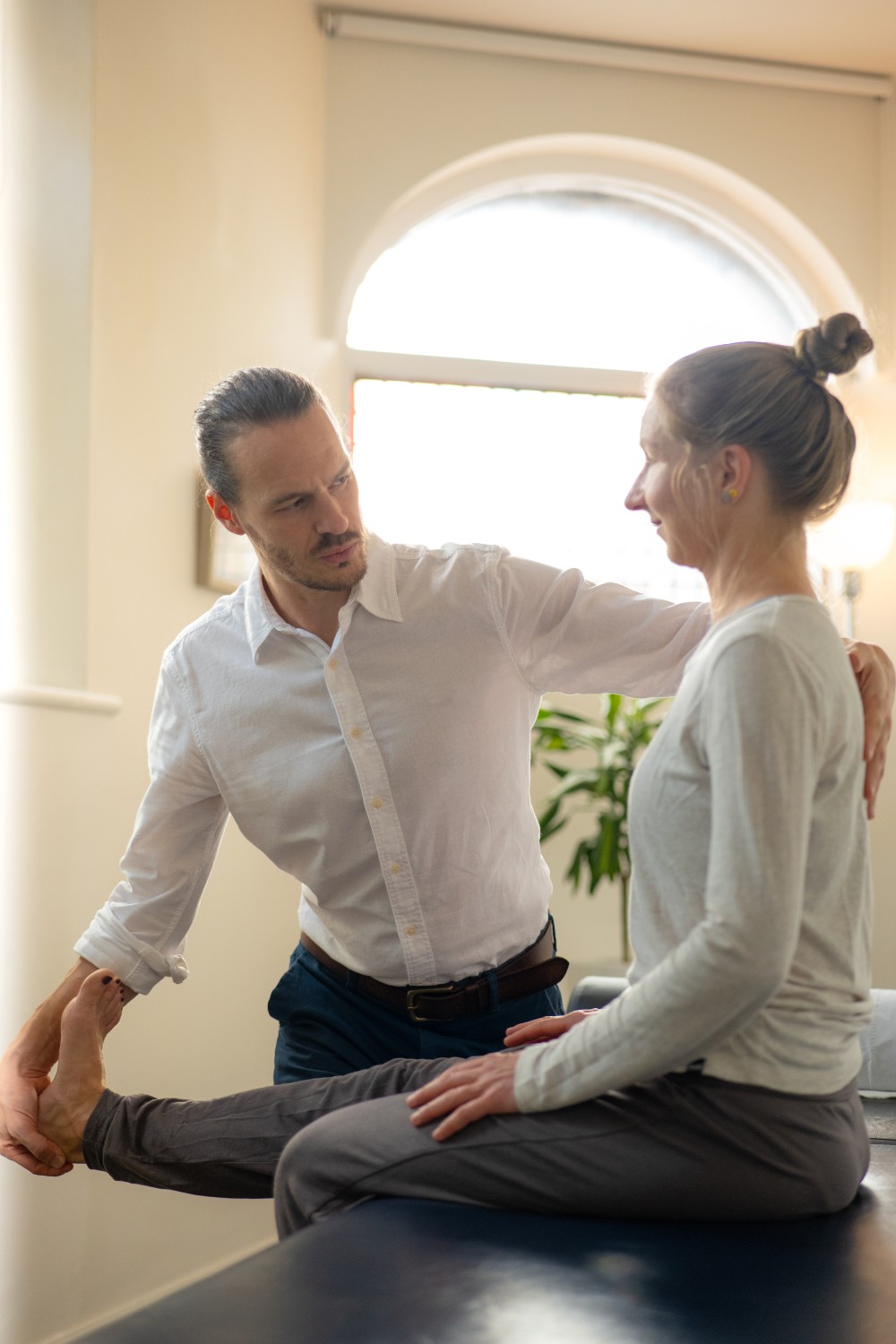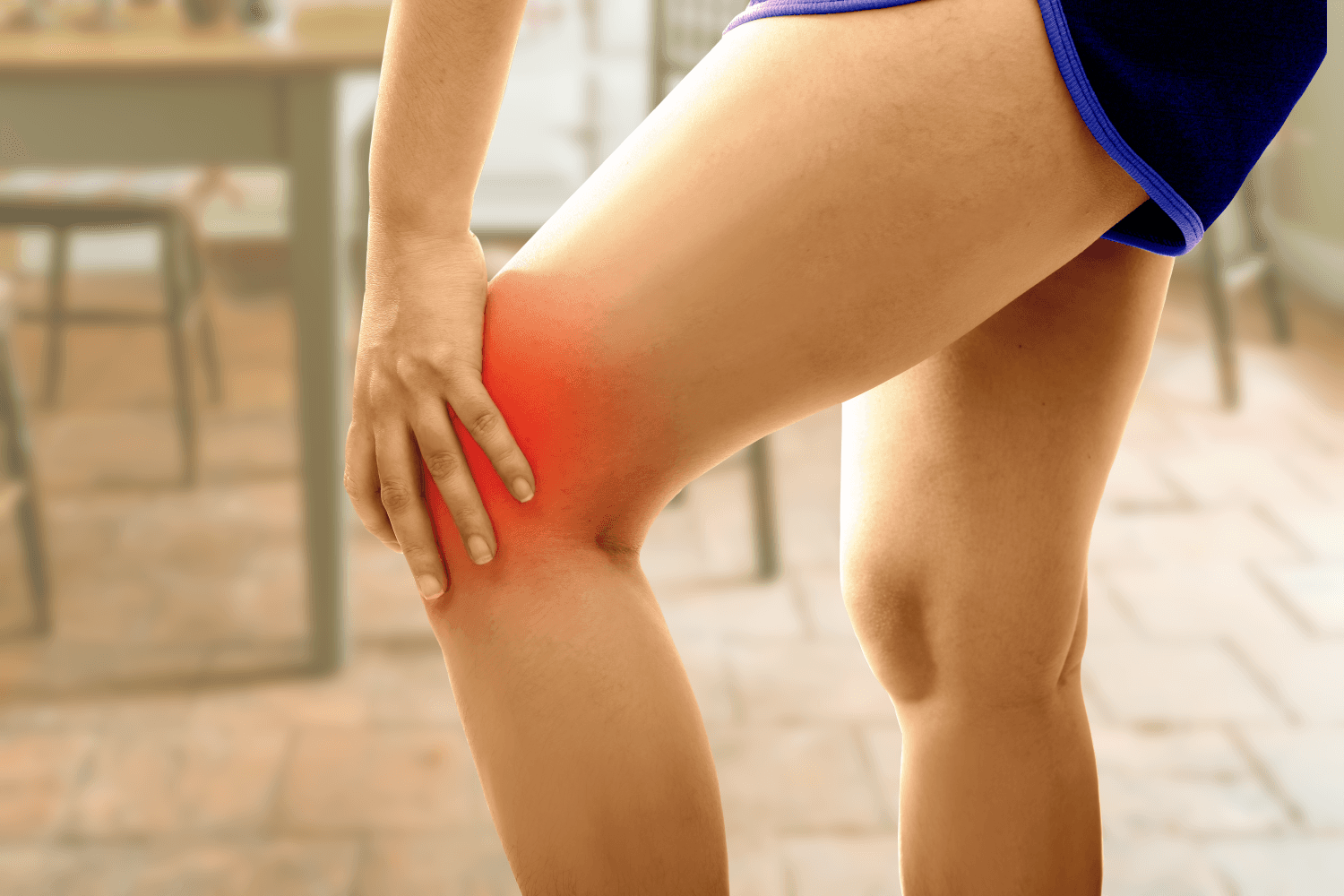Patella Tracking and Knee Injuries
Understanding Knee Pain: A Biomechanical Perspective
The knee, as one of the body’s primary weight-bearing joints, plays a crucial role in providing both mobility and stability. However, this dual function also makes it vulnerable to dysfunction and pain. While knee pain can often be linked to localized issues, such as meniscus tears, a deeper examination of the body’s mechanics—particularly the hips and feet—reveals that many problems originate from poor distal alignment or function.
The Biomechanics of the Knee
The knee is a hinge joint formed by the femur, tibia, and patella (kneecap). It relies on precise alignment and balance to facilitate flexion, extension, and slight rotation. The patella, housed within the quadriceps tendon, acts as a fulcrum, enhancing the leverage of the quadriceps during extension.
However, patellar tracking disorders—where the patella deviates from its optimal path during movement—are a common cause of knee pain. This misalignment increases stress on the cartilage and surrounding tissues, often resulting in anterior knee pain or patellofemoral pain syndrome.
Patellar tracking issues rarely occur in isolation; they often stem from dysfunctions higher or lower in the kinetic chain. This underscores a key principle of biomechanics: the knee does not work alone but is part of an interconnected system where each functional unit influences the others.
Underlying Causes: The Role of the Hips and Feet
Two primary contributors to patellar tracking and knee pain are poor hip and foot mechanics:
Hip Dysfunction: Weakness in the gluteus medius or other hip stabilizers compromises pelvic alignment and control. This often leads to increased femoral internal rotation and adduction during activities like walking or running, which in turn alters the patella’s tracking and increases stress on the knee.
Foot Mechanics: Dysfunction in the feet, such as excessive pronation or flat arches, disrupts the alignment of the lower limb. These ascending stress patterns force the knee to compensate, further exacerbating patellar misalignment and joint strain.
Without addressing these contributing factors, traditional treatments focused solely on the knee may provide temporary relief but fail to resolve the root causes, leaving individuals at risk of recurrent pain and injury.
Chiropractic Care for Knee Pain
Function-based chiropractic care offers a comprehensive approach to knee pain by addressing both the localized symptoms and the systemic dysfunctions contributing to the issue. Specific adjustments to the knee, along with the hips and feet, restore alignment and improve the coordination of the entire lower limb.
Soft tissue techniques are used to release tension in overactive muscles, such as the quadriceps or iliotibial band, while activating and strengthening underutilized stabilizers like the gluteus medius and tibialis posterior. These interventions optimize patellar tracking and enhance the knee’s ability to handle dynamic forces.
Through thorough assessments of the entire kinetic chain, chiropractic care identifies compensatory patterns and addresses dysfunctions across the hips, feet, and core. By treating the knee as part of this interconnected system, chiropractic interventions go beyond symptom relief to provide long-term, sustainable solutions.
Preventing Knee Pain through Biomechanics
Preventing knee pain begins with addressing the foundational imbalances that influence knee mechanics. Strengthening the gluteus medius and other hip stabilizers is essential for improving pelvic control and reducing femoral internal rotation. Exercises targeting the feet and hip mobility improve force distribution and alleviate stress on the knee.
Incorporating postural awareness and proper movement patterns during activities like squats or lunges minimizes strain on the patella. When combined with chiropractic care, these strategies ensure optimal alignment and build resilience, reducing the likelihood of knee pain and promoting pain-free movement.
Knee related Conditions
Degeneration (Osteoarthritis). This can occur in the cartilage between the femur and tibia, in the meniscus (usually on the inside of the knee) or in the back of the knee cap.
Trauma related injuries: Anterior Cruciate Ligament rupture is the most common ligament in the knee to snap causing the lower leg to translate when walking. The posterior cruciate ligament and the two collateral ligaments may also suffer damage. The meniscus can become torn when the joint is pushed beyond its end range. This will lead to the knee becoming extremely swollen.
Functional pain syndromes.

I have been suffering knee problems for years. Finally I have met someone who understands the reasons of my pain. Very very pleased. I am on a recovery path thanks to his treatment and exercises.

